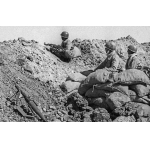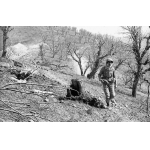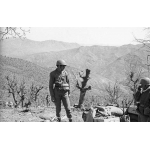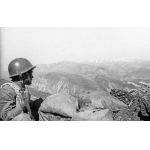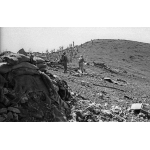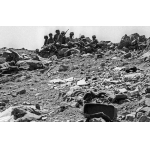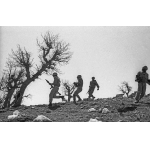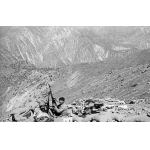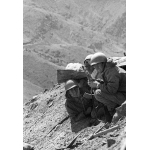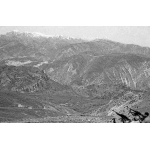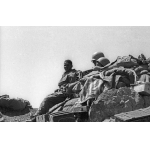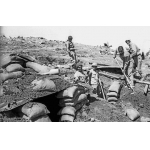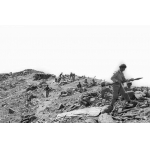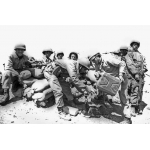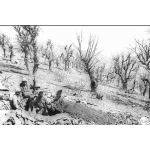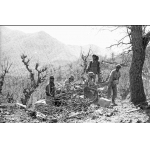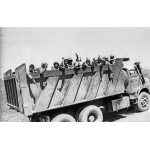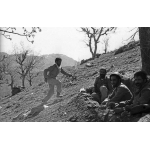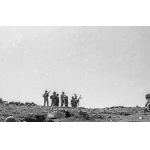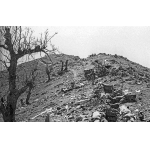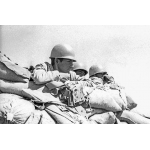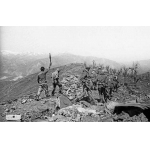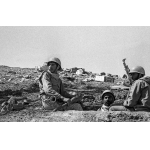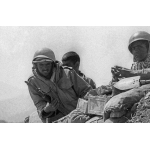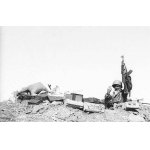Operation Karbala-10
Aida Aghamirzaei
272 بازدید
Operation Karbala-10, which was a large-scale operation, began on April, 15, 1987. It occurred in the northwest region and the northern front of Mawt, Iraq. It was commanded by the Najaf Base and executed with the cooperation of the irregular forces of the Ramadan Base and the Patriotic Union of Iraqi Kurdistan. This operation lasted twelve days and, although it did not achieve its principal goals, it led to the liberation of 250 kilometers of Iraqi soil, as well as the heights near the city of Mawt.
After Operations Karbala-4 and -5 on the southern front, and the supplementary operations of Operation Karbala-8 in Shalamcheh, the IRGC was determined to prevent Iraq from regrouping. However, there was uncertainty about the complete success of Operations Karbala-8. Therefore, it was necessary to choose another area for this operation, so that in case of failure, another operation could be carried out immediately on the new front. In addition, the beginning of spring required moving into the operational area quickly. Also, in 1987, the northwest front became a focal point for the commander of the army and it was necessary to carry out operations on the west and northwest front.[1]
The general area for Operation Karbala-10 was on the Baneh-Sardasht axis, i.e., north to the Glas Border River, south to the Ausiville River, east to Surkoh, and west to the Gardresh Heights and then the general heights of Asos. The operational area consisted of tough terrain, with relatively high and impassable heights, which made moving in these areas very difficult. This difficulty was amplified due to the lack of roads. The highest mountain in the region is called Garo. It overlooks all the surrounding areas. Also, in addition to the numerous villages and towns that exist in this region, the mentioned rivers also flow through this region. Additionally, due to the presence of tall trees in the hills, conditions were perfect for the infantry to hide and even move during the day.
With the establishment of the Ramadan Base and the conduct of guerrilla operations deep inside Iraqi territory, the activities of opposition groups in northern Iraq entered a new phase. With the help of Iran, they narrowed the field against the Iraqi regime. Also, the vital importance of oil and roads in northern Iraq was no less than in Basra to the south, and it encouraged the command of the IRGC to take a closer look at this area. They thought that the stalemate of the war in the south could be reduced to some extent by establishing strongholds and conducting operations in this area.
Based on this change in attitude, Iran's first large-scale attack on the western front was carried out by combining two regular and irregular operations. So, on May 15, 1987, with the help of Iraqi Kurdistan Patriotic Union forces, the Ramadan Base planned and implemented the irregular part of the operation to the north of the Iraqi city of Sulaymaniyah. This operation was called Fath-5. It was supposed to destroy two Iraqi army bases and connect the area under the influence of the Patriotic Union to the Najaf Base area, which was in charge of the regular part of the operation.
The times for launching the attacks on the enemy in different axes was not the same, even though it was set to begin at 02:00, but they began from 02:30 in the Besan axis, 01:30 in the Najaf Base axis and with slight differences in other axes. Nevertheless, the operation started and by 02:00 the forces attacked the enemy's positions in all the axes - except the Chenkavi axis, where due to the blocking of the Sir Pass by heavy snow, the operating unit could not reach the desired area. The Ramadan Base was also able to establish itself on the heights of Gujar and El Aghlu, and occupy a position where the enemy was not seriously present. In the afternoon of the first day, the Iraqi forces retook the height of Golan, but they were pushed back after an hour.
In the continuation of the operation, additional measures were gradually taken in Besan, Zhazhileh, Chenkavi, and the Ramadan Base axis. The main problem was the lack of road for the development of operations, the entry of the second-stage units, and the support for the troops on the front line. Therefore, a lot of effort was made to build the road. In the axes of Golan, Zhazhileh, Chenkavi, and Besan, the captured positions were exchanged between the fighters of Islam and the enemy forces. In particular, the Golan Heights fell into the hands of resistance and enemy forces several times. Each of these axes required a specific approach for continuation in the operational area, which was sensitive to the enemy. Chenkavi and Zhazhileh axes provided the connection with the Ramadan Base. While, Jazhileh and Golan were considered to be the prelude for the capture of Mawt. The axis of Besan also allowed for movement towards Chuarta.
In the second stage of the operation, two basic measures were taken into consideration. Firstly, completing the capture of the Golan Heights and advancing on Qashan Heights. Then, to establish complete annexation of it to the Ramadan Base. For this purpose, the units of the second stage went into action and managed to complete the capture of the Golan Height and advance on the Qashan Heights, but, due to the lack of manpower and weak support, it was not possible to continue the operation. In the early stages, the 57th Division of the Abul Fazl Brigade had captured most of the desired targets, including 250 km of land in the mountainous region of Mawt, but the attempt to start the second phase of the operation in the Mawt axis, by bringing in the 35th Imam Hasan Brigade, did not succeed. The operation lasted for ten days, and the forces of the Ramadan Base could not join the units who were involved in the operation. During the operation, rain and hail caused flooding. Bridges and roads were destroyed and ground support was lost. Hence, the Iranian forces could not do what was necessary, and overall the goals of this operation remained incomplete.[2]
During this operation, Hasan Shafizadeh, the commander of the artillery of the Islamic Revolutionary Guard Corps, Hossein Basir, the deputy commander of the 25th Karbala Brigade, Abdul Ali Ameri, the medical officer of the 33rd al-Mahdi Brigade Ali Reza Khorasani, the commander of the ammunition battalion of the 25th Karbala Brigade, were all martyred.[3]
1 Ardestani, H., Punishment of the aggressor, Tehran: Islamic Revolution Guards Corps, War Studies and Research Center, 2000, p. 319.
[2] Alaei, H., Iran-Iraq War Process, Tehran: Merz and Bom, 2011, pp. 337 and 338.
[3] Atlas of lasting battles.



